
Creative: Kishu
Kishu:Visit the leather country of Kishu

The three largest leather producing areas in Japan are Asakusa, Himeji, and here Wakayama. Their history is old. In literature from the Muromachi period, there is a passage that mentions how excellent the leather cords made in the Kii Province are. During the Edo period, craftsmen worked on building armor inside the walls of Wakayama Castle. Eventually, the demand for military boots increased with the modernization during the Meiji Restoration, and a Western shoes training center was established here. It is said that lecturers invited from overseas directly taught Western shoemaking and tanning. After that, tanning became a local industry in Wakayama and continues to this day.
Certainly, the history is old. However, what’s interesting about the leather industry here is that while they are proud of its long tradition, they refuse to settle. Mr. Morita, the chairman of the Wakayama Tanners’ Association, which unites the local companies, says: "Each company makes their own unique leather. We have specialists who handle vegetable tanned leather, enamel, split leather, sheep skin, etc."
It's not just diverse. Each maintains world-class quality, and they do business with famous manufacturers. And the bond between the tanners is extremely strong, which is also unique to this area. i
"In order for us to survive, we have to work as a team," says Morita.They share information and technology with each other daily, and if there is a leather fair, whether it’s in Japan or overseas, they will exhibit together without leaving anyone behind. They are extremely transparent.
Team Wakayama is now starting a new movement. Leather that has been processed in the prefecture and meets certain standards is certified and branded as "Kinokuni Leather". Bags and accessories made from this leather have begun to appear in the market. There are high expectations for what kind of products will be produced from this high-quality Wakayama leather.
"Our leather has often been supplied outside the prefecture. By integrating production within Wakayama, we would like to promote our leather industry to both inside and outside the prefecture."
The characters that make up the name Wakayama are 和 (wa), meaning ‘Japan’, and 歌 (ka), meaning ‘sing, sing praise’. Learning about the leather industry in this area, which continues to unite and move forward, I was convinced that it was the perfect name for the area.
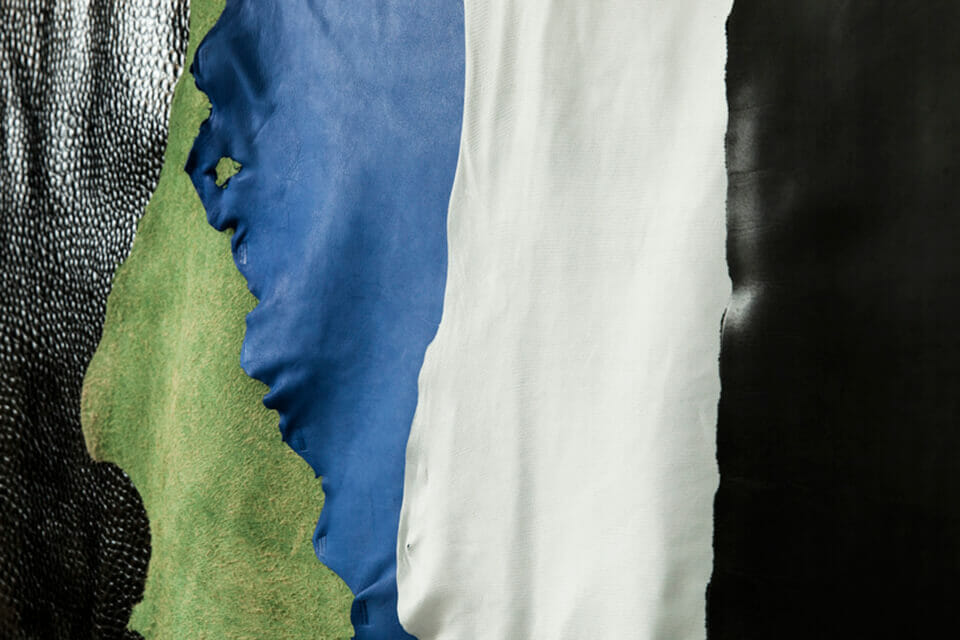
Leathers made in the area. From the right, vegetable tanned leather, sheep (white and blue),split leather, embossed leather. Diversity is what makes Wakayama unique. Each of them is made with the highest level of technique and is well received at exhibitions.
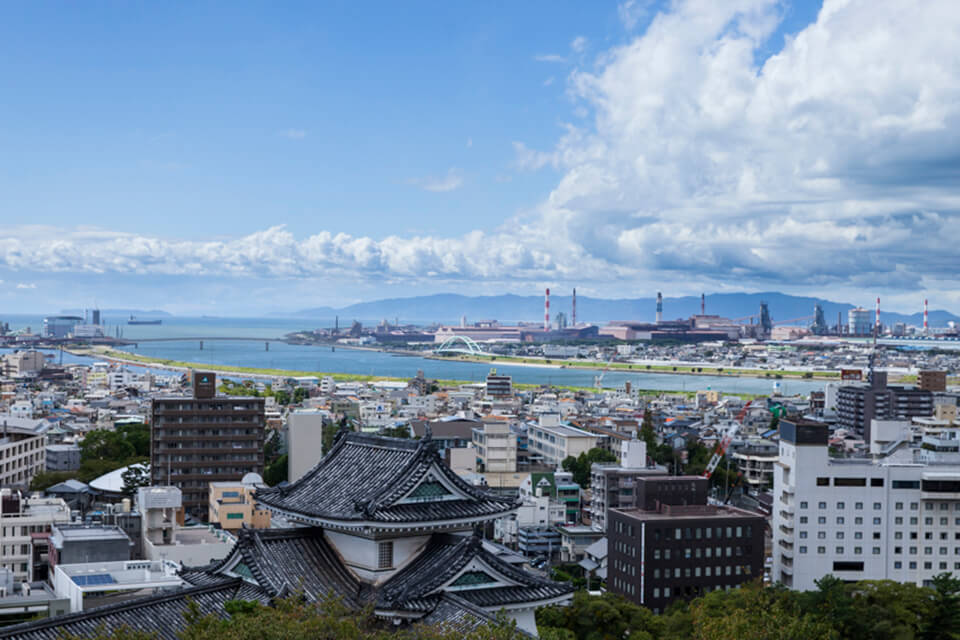
At first, leather was used to make weapons for the Tokugawa family. Next, military boots for the Japanese army. And finally, leather for the general public. From specialty items to everyday items. The history of the leather industry in Wakayama shows the relationship between the Japanese people and leather at that time. What kind of leather is being made in this area now?
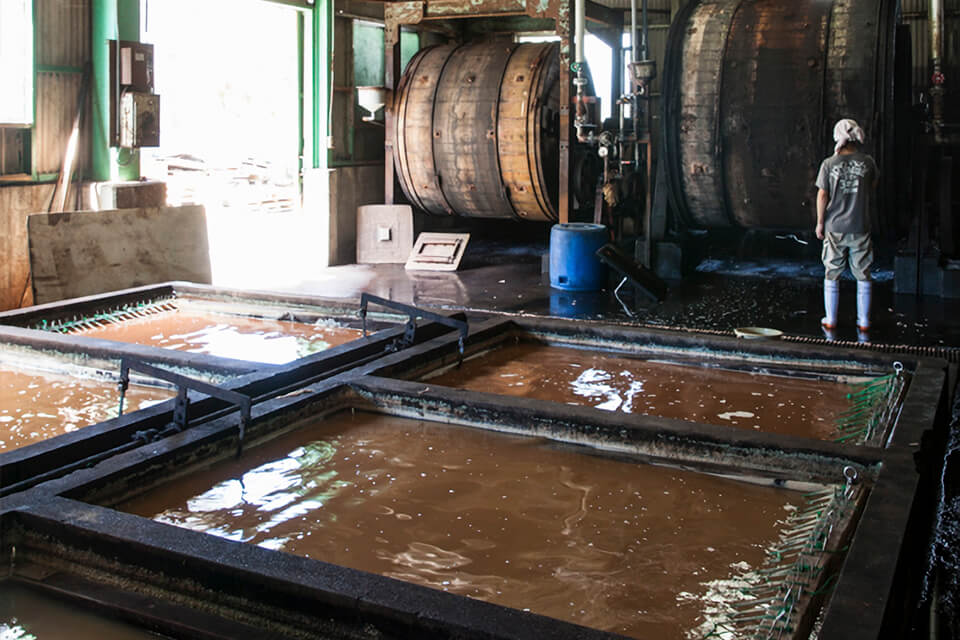
The cowhide slowly rises and sinks from the pit tank. Each time, the leather becomes stronger and gains a bolder look. The tannin leather that has been carefully nurtured in this way bears the healthy strength of an ancient warrior. Grab, smell, feel. It was as if the leather was speaking to me, and another new sheet of leather rises from the tank.
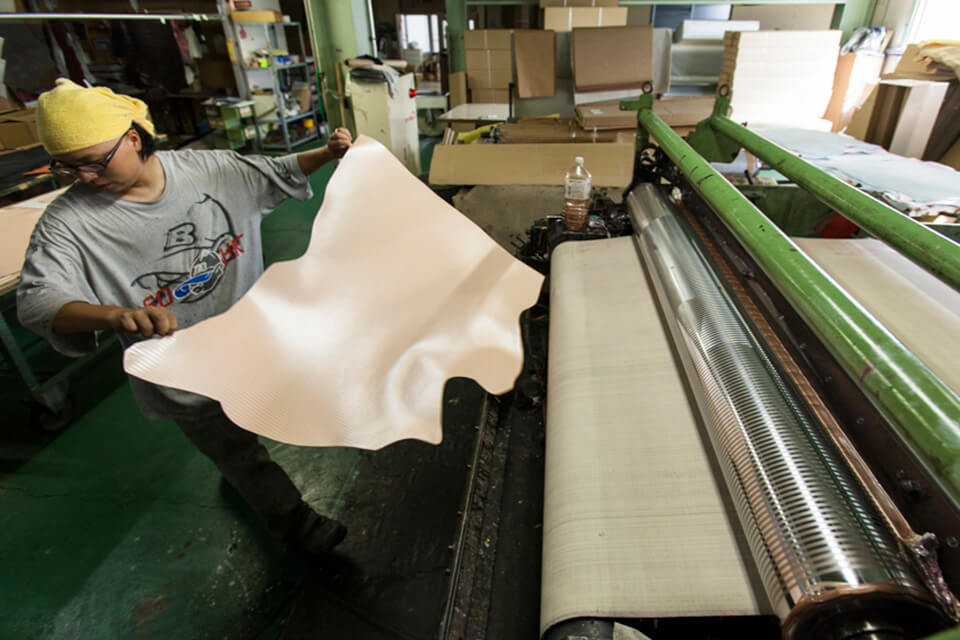
Bright flowers bloomed on the leather. A kaleidoscope-like world of color. Elegant stripes. Bold crocodyl spots engraved. Systematic color patterns. Irregular patterns. There is nothing you can't draw on this canvas. Special processing is, in its essence, the embodiment of technology that has reached the highest level.
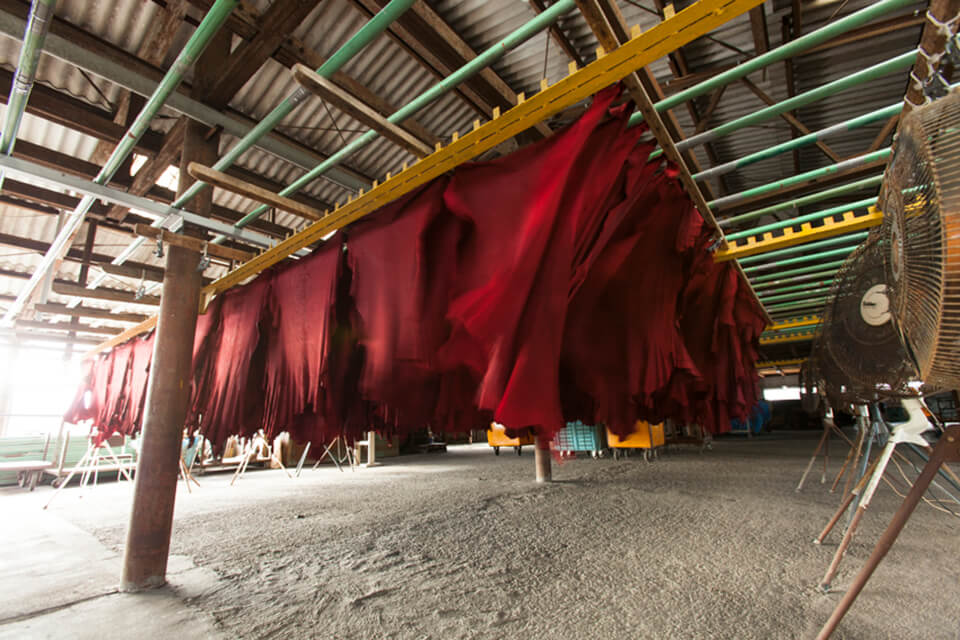
Although it looks graceful, it is not weak. It has a dignified inner strength. Soft leather such as deer and sheep skin is similar to Yamato Nadeshiko, or the ideal Japanese woman. Cultivate its innate qualities; its elasticity, water repellency, and permeability. The tanner looks on with the eyes of a parent looking after their child.